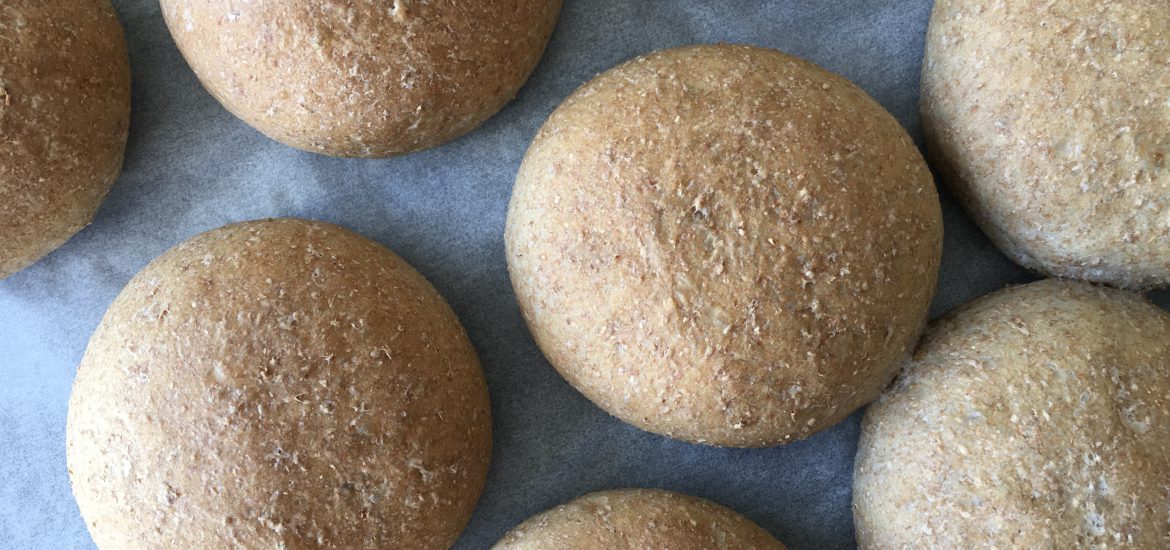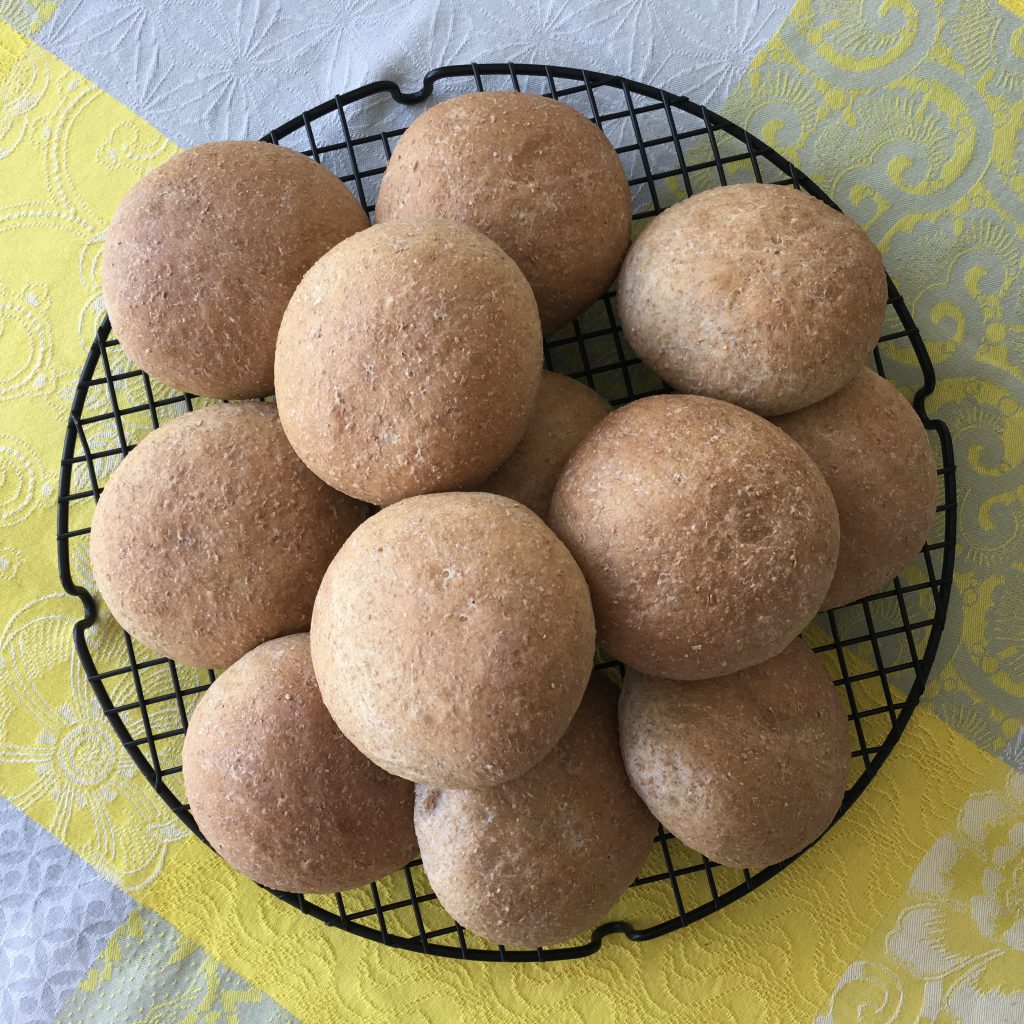
When making this bread I remembered the line from Billy Joel’s Uptown Girl: …uptown girl, she’s been living in her white bread world. The implication is that white bread equals luxury equals a fine life.
Not any more. I typed in the words why is white bread into Google and the search returned the following words to complete the question: (why is white bread) white, not vegan, bad for diabetics, bad for ducks, bad for you, fattening.
Oops.
I still like white flour when making certain breads such as fougasse, focaccia and brioche. I like wholegrain and malted flours when making flowerpot bread, in-house bread and in-house bread rolls. But I do not have a lot of time for plain wholemeal flour because it reminds me of sawdust.
We are in the midst of a lockdown and it is difficult to come by flour and yeast, so I am happy to use what I can find. Wholemeal bread flour is fine and it is good for me to try something else.

I have also had to resort to fresh yeast which I only ever used a few times a student. The bother of trying to get the right water temperature, creaming the yeast with sugar and waiting for the bubbles all contrived to put me off from the start. And then there was the Vienna Incident.
The Vienna Incident: Mr Gochugaru and I embarked on a month-long train journey across Europe as soon as we had finished our final year at university. We were on a tight budget so lunch was mainly bread and cheese or pizza slices in Italy. It was beautiful blue sky day in Vienna and we had found a delightful delicatessen, the likes of which did not yet exist in England. We filled our basket with kaiser rolls, cheese, ham, water and butter. I was so happy the deli sold butter in little individual packs.
We walked across the park and found an unoccupied bench. We must have had a penknife with us (pre-terrorism days) because I cannot think how we would have cut the bread rolls otherwise. When it came to spreading the butter on to the rolls I realised something was truly off. The butter had the texture and colour of clay.
Actually we had bought four packets of fresh yeast. I think we saw the funny side of things because we still bring up that story sometimes when we talk about yeast or butter or Europe.
This is what fresh yeast looks like packed and unpacked
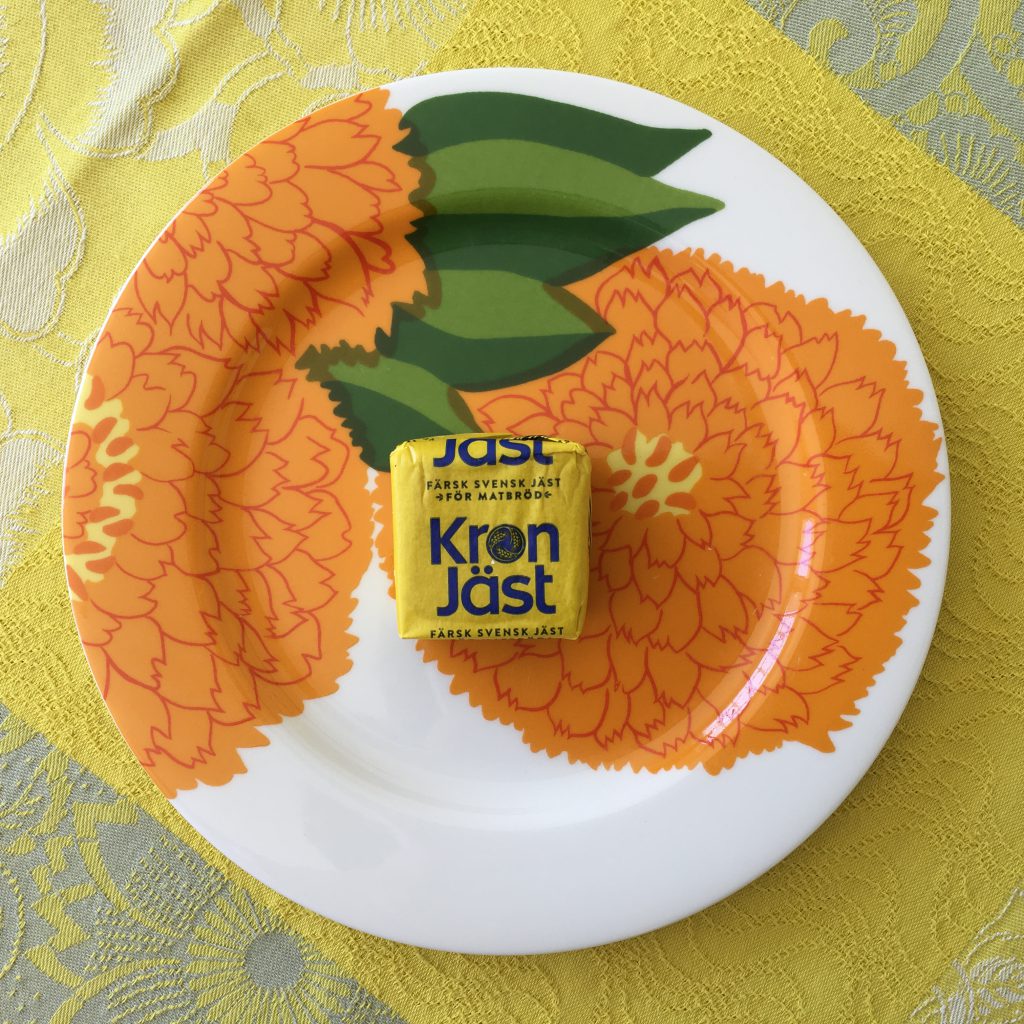
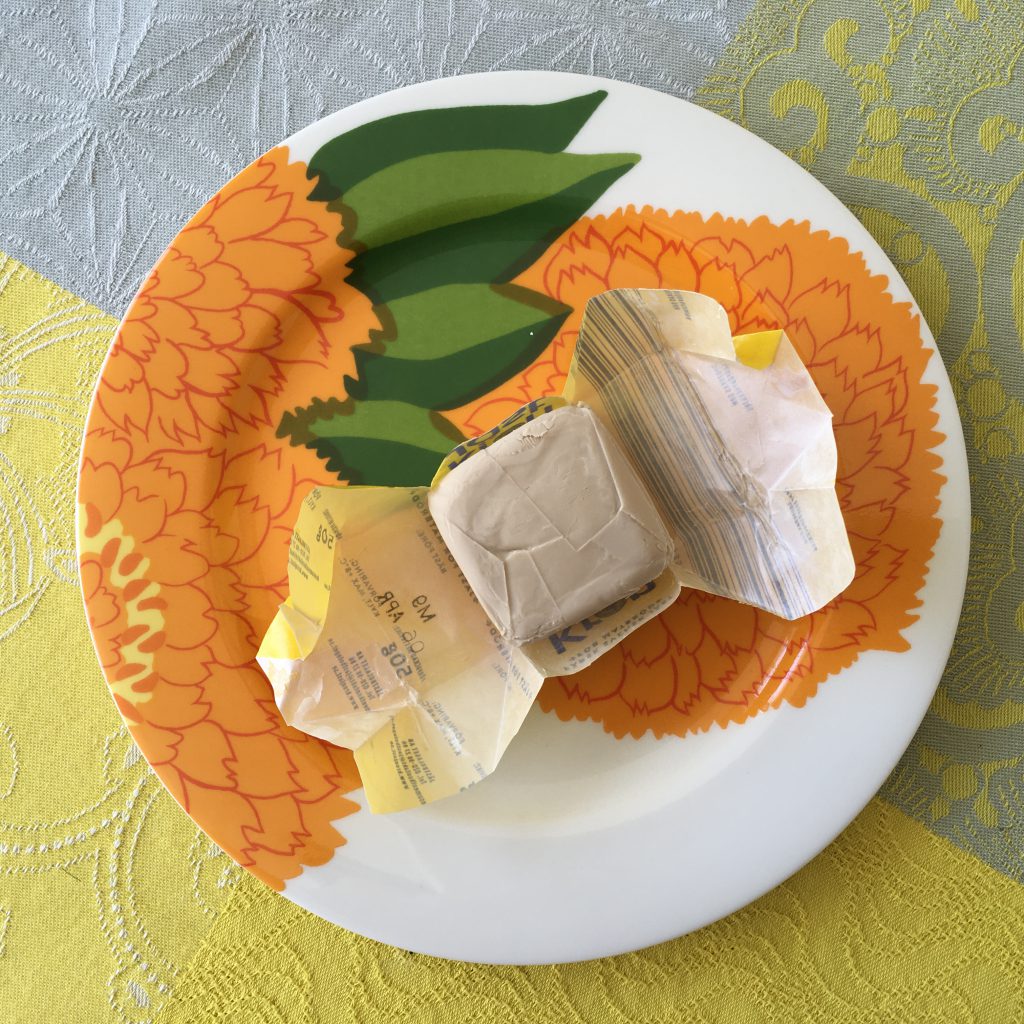
Previously I had mentioned that I used dried active and easy bake yeasts interchangeably. To recap: dried active yeast needs activating in warm water, whereas fast action or easy bake yeast can be used immediately without activating in warm water as it contains added ascorbic acid as a flour treatment agent. Fresh yeast also needs to be activated before adding to the flour.
Here is a yeast conversion table and another helpful article. 1 teaspoon fast action yeast = 3 g = 10 g fresh yeast. 1 teaspoon dried active yeast = 4 g = 10 g fresh yeast. One loaf of bread using 500 g flour usually requires 2 teaspoons of fast action yeast/ 2 teaspoons dried active yeast/ 20 g fresh yeast.
| FAST ACTION YEAST | DRIED ACTIVE YEAST | FRESH YEAST |
| 1 g | 1.5 g | 3 g |
| 2 g | 3 g | 6 g |
| 3 g | 4 g | 10 g |
| 4 g | 6 g | 12 g |
| 5 g | 7 g | 17 g |
| 10 g | 14 g | 34 g |
| 20 g | 28 g | 68 g |
The bread rolls turned out very well and would be suitable either as breakfast rolls or for making sandwiches. This recipe makes 10 – 12 rolls. I used my Thermomix to make the dough, but you can use any bread-making method you are used to i.e. by hand, in a food processor or with an attached dough hook in the KitchenAid. The Thermomix heats the water to a precise 37 C to activate the yeast and this is why I am confident enough to use fresh and dried active yeasts in my bread making.
For the Rolls:
320 g water
2 teaspoons fast action yeast/ 2 teaspoons dried active yeast/ 20 g fresh yeast (see note above)
1 teaspoon unrefined caster sugar
400 g strong wholemeal bread flour
100 g strong white bread flour
2 teaspoons sea salt
40 g olive oil or softened butter
How to Make:
Lightly oil a large mixing bowl and a large piece of cling film then set aside.
Place the water, yeast and sugar in the Thermomix bowl. Warm 2 minutes / 37 C / speed 2.
Add the flours, salt and olive oil or butter.
Knead 3½ minutes / dough function.
Transfer the dough to the oiled bowl and cover with the cling film.
Leave the dough to prove until it has doubled in size, which takes around 45 minutes to 1 hour depending on the kitchen temperature.
At the end of the rising time, divide the dough into 10 – 12 equal portions.
Form rolls out of each dough portion by flattening it out into circle, then gathering the edges towards the centre. Make a twist, then turn the dough ball around, leaving the twisted end underneath. Finish by smoothing and shaping the dough further by cupping it in your palm on a flat surface whilst rolling it around gently. The idea is to form a ball.
Place the rolls on a lined baking tray. Cover with cling film and leave to prove a further 30 – 40 minutes.
Towards the end of the second proving time, preheat the oven to 220°C.
Bake for 20 minutes or until golden brown.
Cool the bread for 5 minutes then transfer to a wire rack to finish cooling.
The bread rolls: unbaked, baked and close up

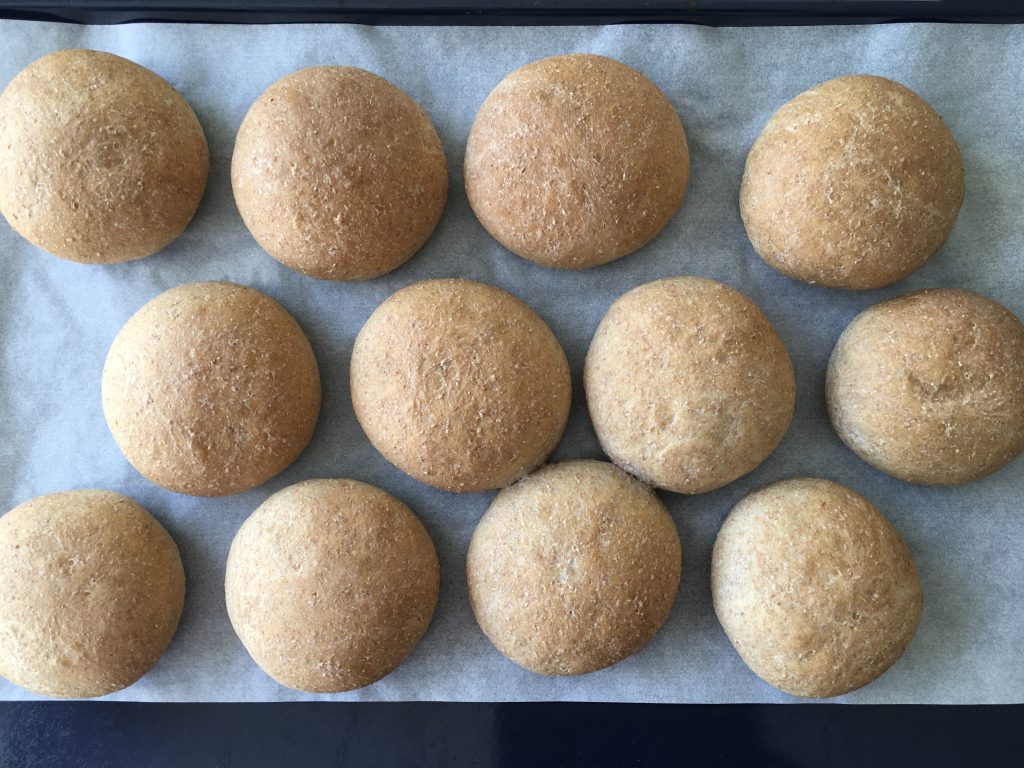
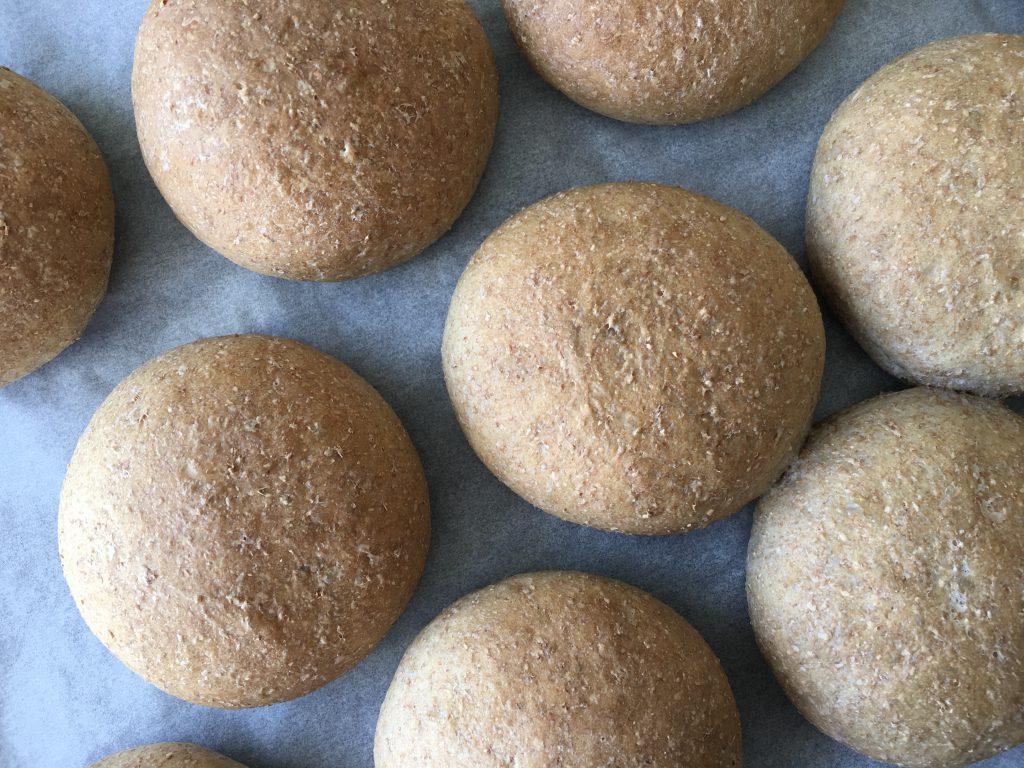
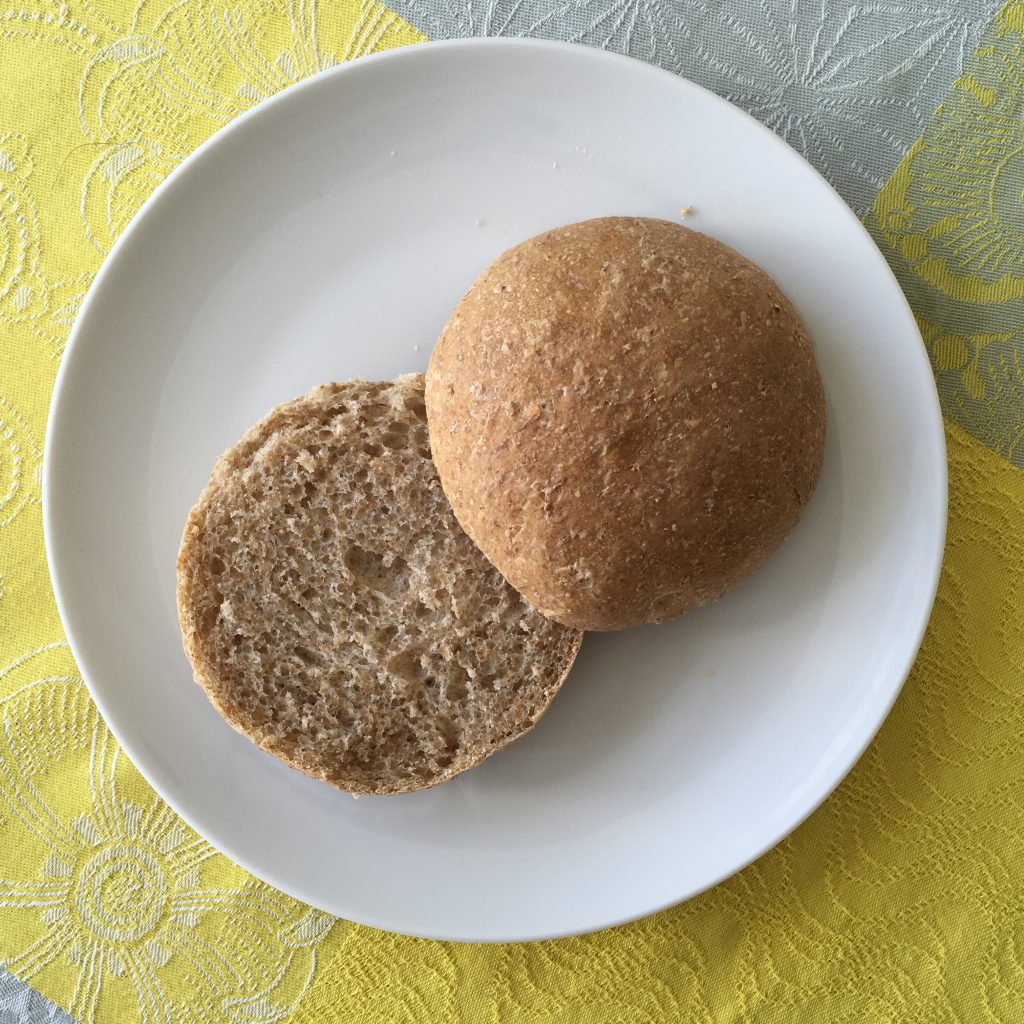
We have been taking daily walks in the park, as part of the permitted daily excercise, and the next few posts will feature cherry blossoms and spring flowers. I have been spending a lot of time decluttering as well so all in all we are keeping busy.
